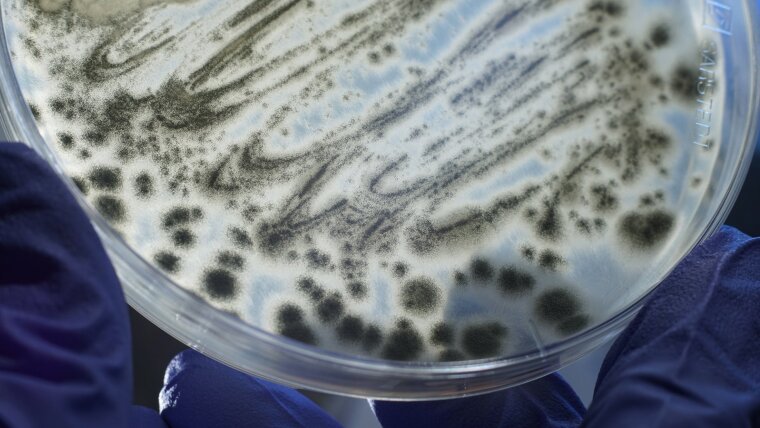
Bacteria
Bacteria are single-celled organisms. They belong to a group called prokaryotes, which are organisms that lack a cell nucleus. Instead, their genetic material floats freely in the cell plasma. A bacterial cell is surrounded by a cell wall. The majority of known species of bacteria measure less than one micrometre (one thousandth of a millimetre). They are spheroidal or bacillary in shape; some possess flagella that enable them to move. Bacteria often form biofilms together with other microorganisms. Bacteria subsist in different ways: some require oxygen, while others survive without; some perform photosynthesis, though most rely on organic substances from other organisms and play an important role in geochemical material cycles and food webs.
Protozoa
This non-systematic group of micoorganisms is composed of single-celled eukaryotes, including many organisms that live as parasites, such as amoebas and flagellates. Certain species of protozoa can trigger diseases in humans, such as sleeping sickness, toxoplasmosis, malaria and amoebiasis.
Archaea
Like bacteria, which are very similar in terms of their exterior, archaea are prokaryotes. At the molecular level, however, there are significant differences between archaea and bacteria. The majority of known archaea species are anaerobic (meaning they do not require oxygen) and often survive in extreme conditions. For instance, some archaea live in environments exceeding 100 °C. Others can withstand high salt concentrations, acids, extreme pressures and radiation. Archaea can be found in hot springs, salt stocks and rock formations—as well as in the human gut.
Fungi
Fungi are eukaryotes, along with plants and animals. Eukaryotes are organisms with a cell nucleus, which contains their genetic material in the form of individual chromosomes, along with other organelles. Fungi can be single-celled or multicellular. Microorganisms include single-celled organisms such as yeasts and multi-celled fungi such as moulds. Unlike plants, fungi are not capable of photosynthesis. They are »heterotrophic«, which means they subsist on organic substances from other organisms, such as those found in the human gut or on our skin. Unlike animals, fungi have a cell wall. Fungi produce substances such as antibiotics and, together with bacteria, play a crucial role in material cycles as »decomposers«.
Mikroalgae
Microalgae are eukaryotic organisms comprised of one or a small number of cells. They occur in both freshwater and saltwater as well as in soil. Like plants, microalgae perform photosynthesis and make a significant contribution to global oxygen production and carbon fixation. Microalgae in the oceans, known as phytoplankton, are a key component of food webs and hold immense ecological significance. Some microalgae establish symbiotic communities with fungi and form lichens.
Viruses
Strictly speaking, viruses are not microorganisms—because they are not organisms at all. They lack characteristic features of organisms, such as metabolism and the ability to reproduce. Viruses are smaller than microorganisms and exist solely from genetic material and the proteins that enable them to replicate in host cells. Viruses can affect both eukaryotes (plants, animals and fungi) and prokaryotes (bacteria and archaea). Viruses that infect prokaryotes are called bacteriophages.